Last updated on December 19, 2022
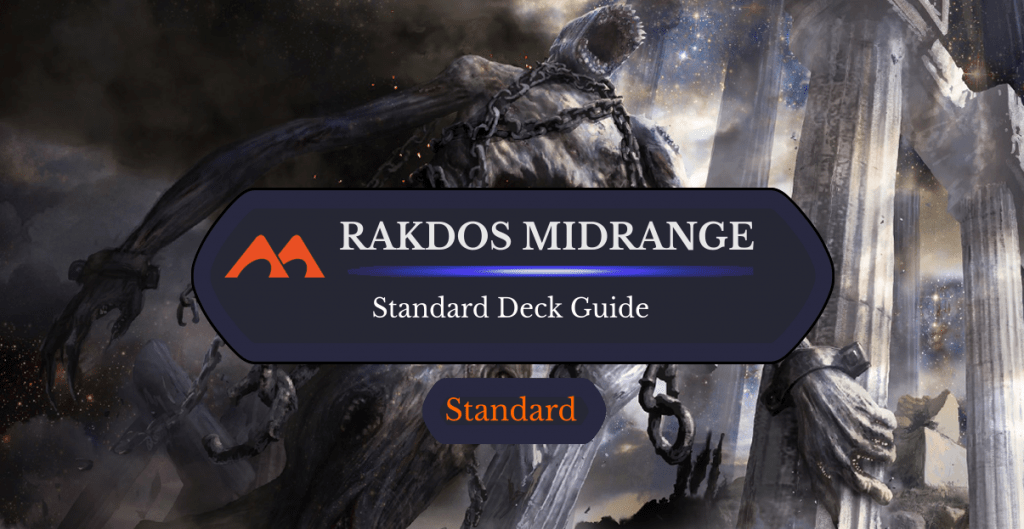
Kroxa, Titan of Death's Hunger | Illustration by Vincent Proce
Standard has gone through some drastic changes since the last two ban lists. With Uro, Titan of Nature's Wrath gone and Omnath, Locus of Creation finally no longer making people pull their hair out, several decks capitalized on getting the top spot of the meta. One of these decks is Rakdos Midrange.
Despite having “midrange” in its name, the deck plays more like a mix between a traditional aggro deck while also being able to utilize discard-based resource denial to win the value game. The card that makes this possible, as you might have already guessed, is another Theros titan: Kroxa, Titan of Death's Hunger. Liliana, Waker of the Dead and Rankle, Master of Pranks, on the other hand, help to constantly bombard your opponent with discards and make sure they can’t properly set up a late turn combo.
If you like a deck that utilizes your graveyard as a resource to make some truly magnificent plays, Rakdos Midrange is likely something you’ll want to try.
The Deck
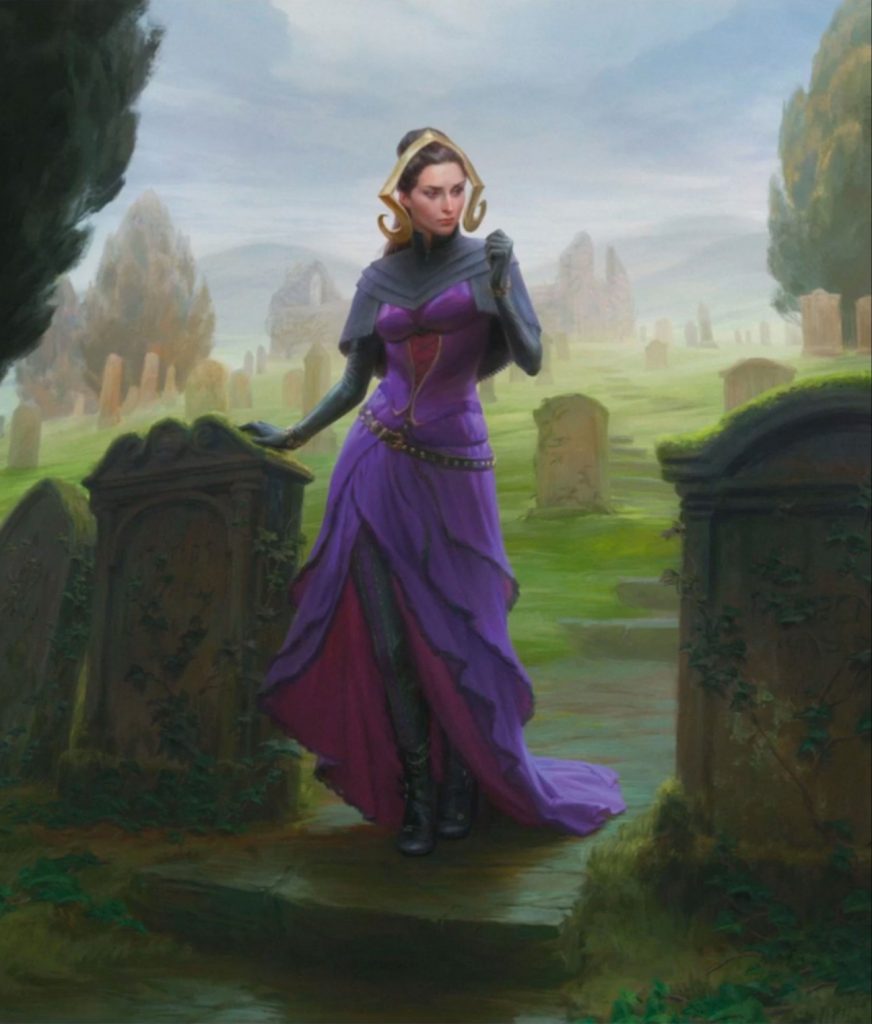
Liliana, Waker of the Dead | Illustration by Anna Steinbauer
Planeswalker (1)
Creature (23)
Robber of the Rich x4
Mire Triton x4
Kroxa, Titan of Death's Hunger x4
Nighthawk Scavenger x2
Murderous Rider x2
Bonecrusher Giant x4
Rankle, Master of Pranks
Ox of Agonas x2
Instant (4)
Eliminate
Heartless Act
Hagra Mauling x2
Sorcery (9)
Bloodchief's Thirst x3
Shatterskull Smashing x4
Agadeem's Awakening x2
Enchantment (4)
Land (19)
Castle Locthwain
Temple of Malice x4
Fabled Passage x4
Swamp x6
Mountain x4
Sideboard (15)
Scorching Dragonfire x2
Soul-Guide Lantern x2
Shredded Sails x2
Agonizing Remorse x3
Heartless Act
Pharika's Libation x2
Cling to Dust
Extinction Event
Elspeth's Nightmare
There are many versions of Rakdos Aggro and Midrange out there. Before rotation, Rakdos sacrifice was particularly popular. With the loss of Priest of Forgotten Gods on top of the Cauldron Familiar and Witch's Oven combo being banned, though, the discard and self-mill variant has become the most popular.
So much so that Rakdos Aggro recently had a spill-over effect into Historic and you tend to see this deck over there quite a bit. With that said, using your wildcards to craft a deck like this is especially nice since you’ll you have a complete top-tier Standard deck and you can easily switch it over to Historic with minimal upgrades because of Kroxa, Titan of Death's Hunger’s high power level.
I’m going to focus on Standard for now, though. If you want the Historic side of things, feel free to leave a comment down below. Let’s jump into the tech for this amazing Standard deck.
The Strategy
The Rakdos Midrange deck heavily synergizes by utilizing self-mill and forcing your opponent (and yourself) to discard in order to make plays. There are some self-contained engines in the deck to achieve this.
Let’s briefly go through these, so we have a better understanding of the basic functionality of the deck.
Mill Engines
This deck revolves around self-milling. The two cards to do this are Mire Triton and Tymaret Calls the Dead.
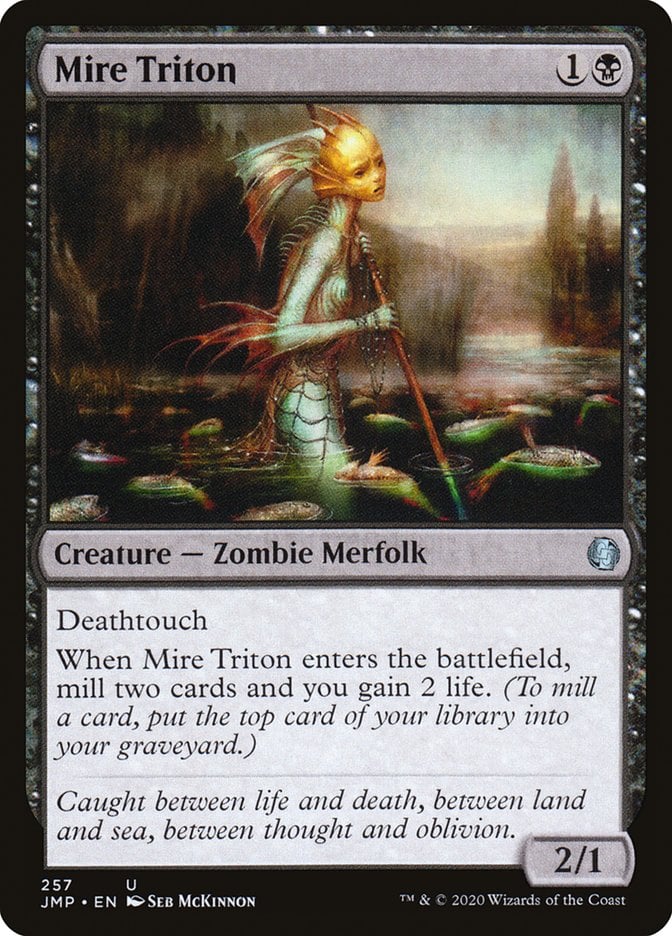
Mire Triton is a great card. Not only does she allow you to mill two cards when she enters the battlefield, she also gains two life which can be great against mono red decks. On top of that, she’s a 2/1 body that helps put some pressure on your opponent as a deathtouch-er, so you could easily use her to block something big like a Lovestruck Beast.
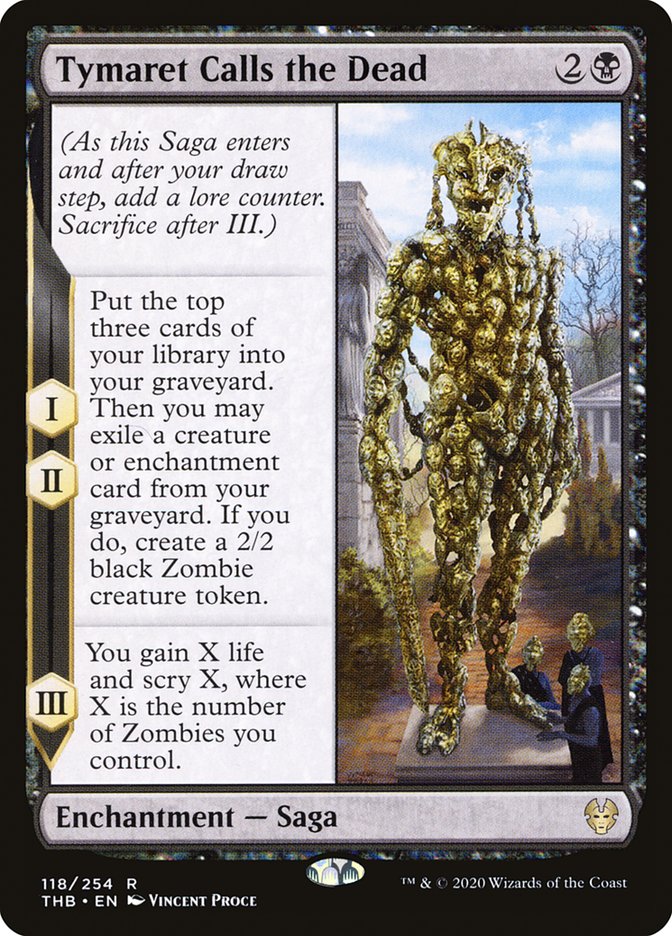
Tymaret Calls the Dead, on the other hand, is the most powerful mill engine in the deck. Upon entering the battlefield, Tymaret Calls the Dead mills three cards and allows you to exile an enchantment or creature to create a 2/2 black Zombie token. The best part about the card is that it triggers a second time the next turn followed by some lifegain and scry action, each equal to the number of zombies you control on the third turn.
Keep in mind that cards like Mire Triton are zombies themselves, which could come in handy with Tymaret’s bonus.
Discard Package

Your main goal is to get cards like Kroxa, Titan of Death's Hunger in the graveyard and then work your way up to two red and two black mana. Once you do, it’s time to bring Kroxa back with its escape effect, exiling five cards from the graveyard in the process. Not only will it force your opponent to discard a card upon entry, but it potentially deals three damage whenever it attacks if your opponent doesn’t discard a nonland card.
Since Kroxa has a 6/6 body, it's very hard for anything except a deathtouch-er to get rid of it and, with so many decks in the format that mill you like Dimir rogues and mono blue mill, the deck typically has plenty of resources to continuously escape Kroxa back onto the battlefield. Cards like Claim the Firstborn aren’t included, but can be a great inclusion if you want to focus on the aggro plan. It allows you to give your Kroxa haste on the same turn you escape it from the graveyard. I like this card on the full-on control aggro list more, but it’s something to keep in mind if you want to be creative!
There are times that you have Kroxa in hand already but want to create some board presence instead of playing and sacrificing it from your hand, especially on turn 4 and beyond. You can easily play cards like Liliana, Waker of the Dead or Rankle, Master of Pranks, using their effects to force both your opponent and yourself to discard a card and put Kroxa into the graveyard that way. Keep in mind that Liliana and Rankle are both great at getting rid of your opponent’s creatures, as well.
By the time you cast Liliana you should have at least four cards in your graveyard already, which means that her minus three ability can easily snipe most creatures off the board with -X/-X equal to the number of cards in your graveyard. On top of that, if you have some smaller creatures on the board like Mire Triton or some zombie tokens courtesy of Tymaret Calls the Dead, you can use cards like Rankle to chain together a number of their effects. Force your opponent to discard, draw, and sacrifice a creature.
You should pick effects that give you the most strategic advantage depending on the matchup. Either way, since there are so many cards we want in the graveyard, Rankle and Liliana’s discard effects are pretty beneficial anyways, even if you don’t have Kroxa ready.
Other Value Cards
In terms of leveraging value even further, there are three cards in particular that come to mind: Robber of the Rich, Nighthawk Scavenger, and Ox of Agonas.
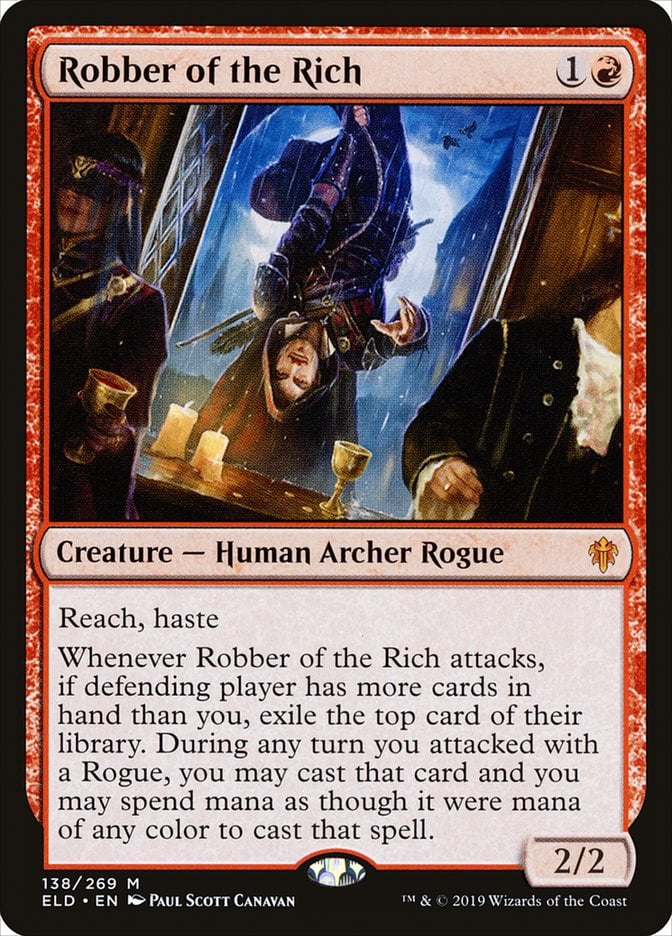
Robber is a good aggro card by itself; it has haste, it has reach to block or even chump block some big fliers, and it can steal a card off the top of your opponent’s library on top of that. He’s just an extra engine in the deck, though, and doesn’t synergize as well as the other two.
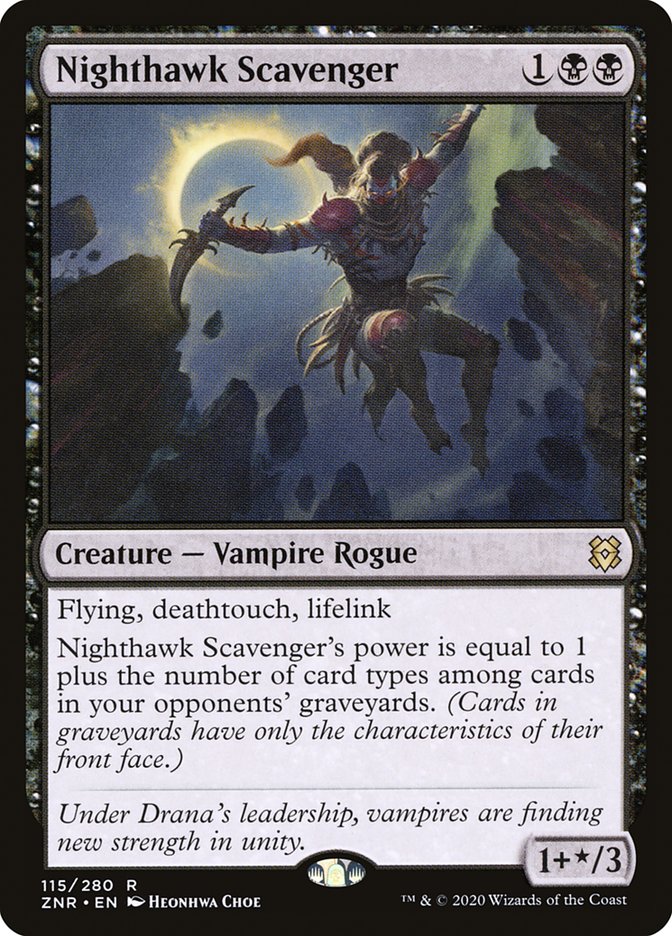
While it is true that we focus on forcing the opponent to discard to grow the Nighthawk Scavenger‘s power, it may not be as powerful as it would be in a deck that focuses on milling. Regardless, Nighthawk Scavenger should grow to a decent level of power and has two slots in the deck.
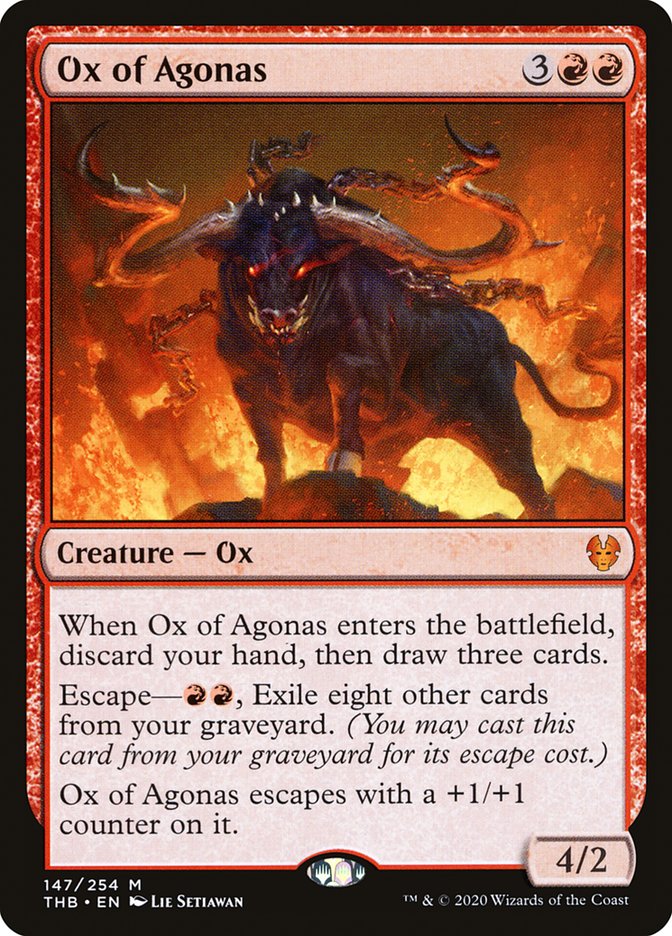
Next up is Ox of Agonas. While Kroxa is the main card we want to escape, Ox can bring itself back by exiling eight cards and spending a mere two red mana. This can be great if you’re stuck on mana, because Ox of Agonas gets a +1/+1 counter when it enters the battlefield and escapes, making it a powerful 5/3. It also discards your hand and draws you three new cards. Casting Ox at its original five mana cost also isn’t bad since you’ll still get a nice 4/2 and the card draw, though.
Instant and Sorcery Spells
This deck runs a lot of removal spells, which is why I mentioned that, even though this deck has aggro elements, it can play the midrange game. The most important cards are four copies of Bonecrusher Giant, two Murderous Riders, and three copies of Bloodchief's Thirst.

From left to right, in a good old fashioned one-to-three mana curve, Bloodchief's Thirst helps to remove a lot of small creatures at the low cost of just one mana. While we don’t have any two mana planeswalkers in Standard, Bloodchief’s kicker effect allows us to change the “destroy target creature or planeswalker with converted mana cost two or less” into “destroy any creature or planeswalker.” It’s a sorcery, which is a slight downside in contrast to most of the other instant-speed removal in this deck, but its flexibility makes it a main-stay in most decks that run black mana.
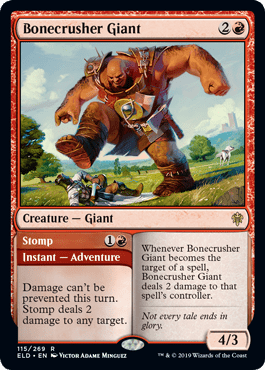
Bonecrusher Giant gives us another big body in times of need, but its true power comes from its Stomp adventure which can deal two damage to any target. This is great to get rid of a small creatures early on so you have more time to set up your discard and escape plan. Since you’ll be able to cast it for three mana as a 4/3 afterwards, it’s a great backup card in case you have nothing else to cast.
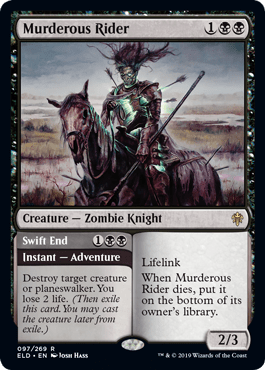
In a very similar fashion to the Giant, Murderous Rider is a 3-mana removal card that can double as a castable body after using his control effect. If you’re matched with a mono red deck, the two life loss for using the removal side may be painful, but luckily this card comes packed with lifelink. After casting him as a creature, he should be able to regain you the life you lost.
Unfortunately, the Rider returns to the bottom of your library if he dies. You can’t use him as an escape resource, which is why he only gets two slow. The flexibility and ability to cast him twice is very valuable, though. The deck also runs a single copy of Heartless Act and Eliminate with an extra copy of the Act in the sideboard, but you could add two extra copies of the Rider if you want.
Modal Double-Faced Cards
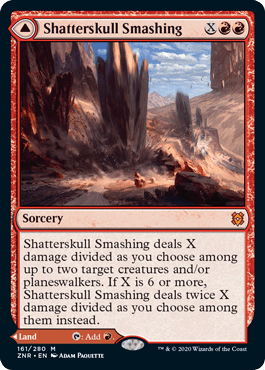


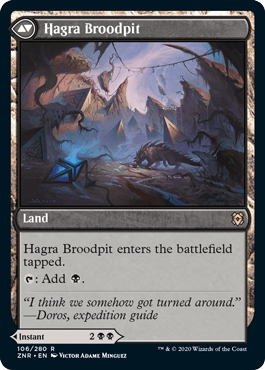
Finally, we also have some modal lands that double as interactive cards. Namely Shatterskull Smashing and Hagra Mauling.
While I’m not a huge fan of Hagra Mauling because the land side comes into play tapped, being a backup land can come in handy in a pinch. If we look at a spell like Shatterskull Smashing, on the other hand, its flipside can come into play untapped at the cost of three life which isn’t great, but the flexibility makes it worth it.
Shatterskull Smashing’s front side is able to deal damage divided among targets you pick equal to any mana you pay beyond the initial two red cost. On top of that, if you cast X as at least six, it’ll deal twice the damage. While I never had the opportunity to make that happen, I’ve found myself casting it for three or four a bunch of times, getting rid of one or two creatures.
While they’re not amazing removal in terms of mana efficiency, both of these really help in situations where you’re flooding out, so I advise to keep Shatterskull in hand as long as possible if you can. If you’ve only got three land cards in hand at the start of a game and one is the Hagra Mauling, you should consider playing it as a land right away because having to spend a turn waiting for it to untap can be harsh if you don’t draw a third or fourth land.
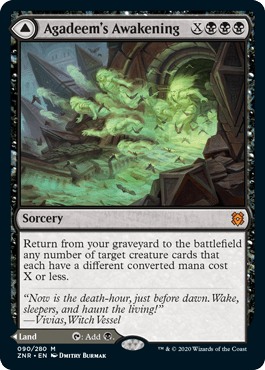
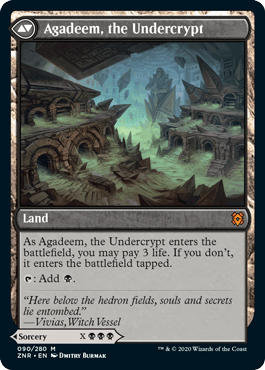
Agadeem's Awakening is the only non-removal spell in our instant/sorcery slots, offering us a mass revival spell with the same flexibility as Shatterskull Smashing. You’ll rarely play this card’s revival effect, but it can get you back into a game instantly when you do. Like with Shatterskull, the three-life cost to come into play untapped is pretty steep, but you can usually weave around it by playing it tapped anyways.
Alternative Deck Techs
If you’re low on wildcards, Lurrus of the Dream-Den and Spikefield Hazard are great in this deck.
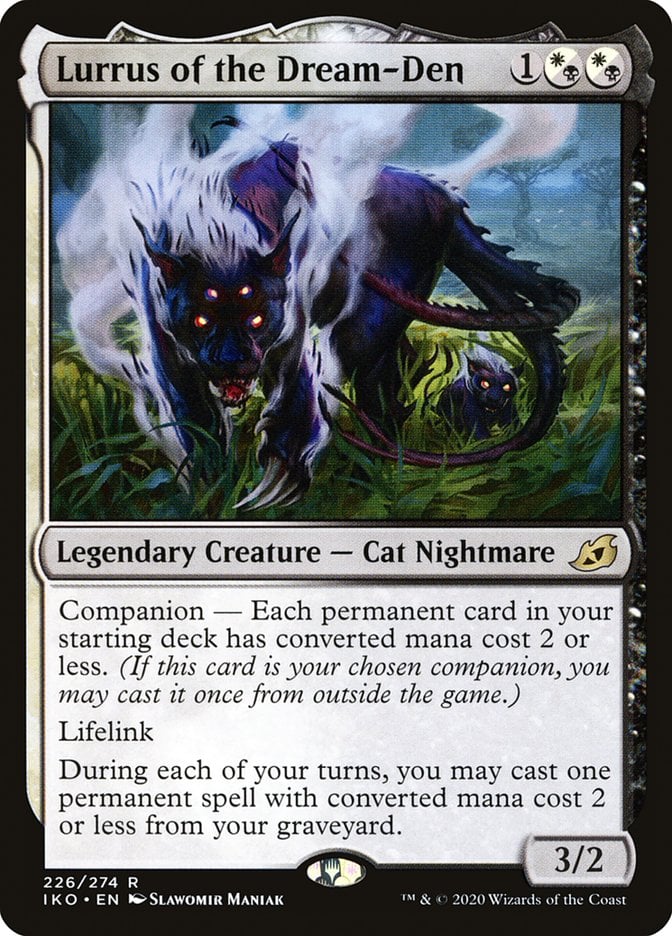
Lurrus especially can start a semi-combo by bringing back Kroxa every single turn and forcing a discard. They could take a Robber of the Rich slot in the deck if needed.

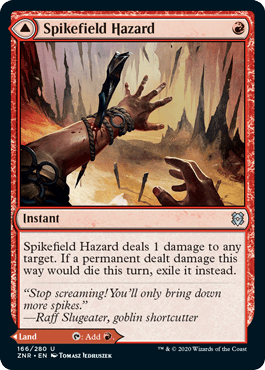

And if you don’t have all the necessary copies of Shatterskull Smashing, Spikefield Hazard is a good replacement. There are plenty of one toughness creature in the format to hit anyway.
Rules of the Mulligan
This deck is relatively straightforward when it comes to mulliganing decisions. As long as you follow these rules, you should be good to go:
- Make sure you have three mana, preferably at least one dual land that can produce red or black
- Make sure you have enough cards in hand to mill yourself to at least five cards in the graveyard. A single Tymaret Calls the Dead can do this, but two copies of Mire Triton are perfect as well. While the Mire Tritons only mill two cards each, you can easily use one as a blocker to get them into the graveyard and make sure you have enough resources to escape a card like Kroxa, Titan of Death's Hunger
- If you also have a Kroxa or removal spell in hand, you should be able to get your discard engine rolling early on
Sideboarding

Mire Triton | Illustration by Seb McKinnon
As far as sideboarding goes, there are a bunch of great options. The cards you most likely want to replace are copies of Robber of the Rich and some Nighthawk Scavenger. The only downside being when you go up against mono red, the lifelink on the Scavenger can be too useful to give up in this matchup.
If you’re up against a graveyard-centric deck, be sure to swap in some copies of Soul-Guide Lantern and Cling to Dust.
We have Pharika's Libation for decks that run a heavy enchantment theme. This card is a color-pie shifting instant that gives black access to targeted enchantment removal. Shredded Sails, on the other hand, is great to get rid of artifacts and flying creatures in some cases.
There’s plenty of additional removal if you’re facing some creature heavy aggro decks. Scorching Dragonfire, Heartless Act, and Elspeth's Nightmare are all great inclusions. The latter could especially be sided against a control matchup as a third copy of hand or even graveyard hate.
There’s also a single copy of Extinction Event, but since we run a relatively creature-heavy list ourselves, this card is rarely sided in. Since most of our creatures are even-costed, though, you could add this in against predominantly odd-costed creature mono green or red.
Finally, there are three copies of Agonizing Remorse. It’s a great way to have even more hand hate available, especially against Azorius or mono blue control matchups. Of course, Remorse could also function as an anti-mirror card to exile your opponent’s escape creatures out of their graveyard or hand. A well-timed Agonizing Remorse could potentially break down their entire strategy.
Tips and Tricks
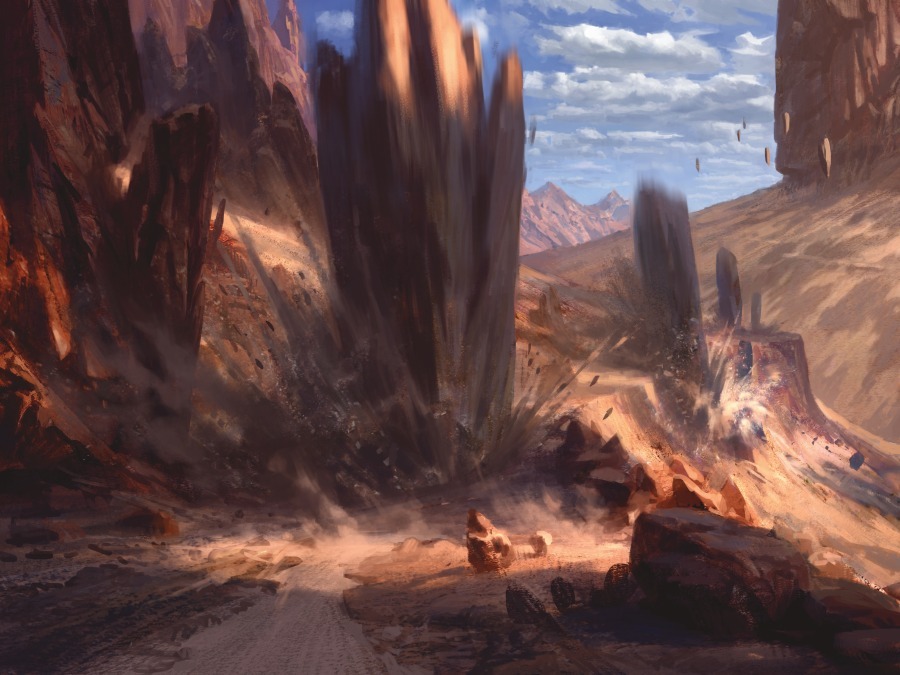
Shatterskull Smashing | Illustration by Adam Paquette
One of the most useful tips I can give is to always go through the entire process of attacking with Kroxa, Titan of Death's Hunger in your head, because it can be easy to miss lethal due to the different sources of damage through discard effects, Rankle triggers, attack damage, etc. Always take your time.
Sometimes you can even sneak in an easy win by attacking with Kroxa and getting three damage from a discard and then follow-up with more Kroxa triggers from the hand or graveyard to deal even more damage. Your opponent may even let your titan attack their life total in some cases if you hide Kroxa in your hand, pushing them into lethal range from an unexpected Kroxa. Make sure you cast your Kroxas during main phase two.
Keep in mind that it’s best to exile milled copies of Tymaret Calls the Dead and lands if you can when using the saga’s effect or escape costs. Since we run Agadeem's Awakening, having creatures in the graveyard to revive is great, so always make sure to keep at least one creature of each converted mana cost in there. It’s just an extra bonus to think about, but don’t let this delay you from casting Kroxa, Titan of Death's Hunger or Ox of Agonas.
Lastly, Liliana, Waker of the Dead has a very powerful ultimate that you’ll rarely be able to play but, if you can, you’ll get to create an emblem that brings a creature back from your graveyard during each combat phase. This can be great to get Ox of Agonas or even Rankle, Master of Pranks back in the game.
Kroxa, Titan of Death's Hunger might even be an option in some cases. Keep in mind that this isn’t the same as escaping and, other than the discard trigger, it’ll sacrifice itself right after entering the battlefield.
Midrange Meltdown

Rankle, Master of Pranks | Illustration by Dmitry Burmak
Rakdos Midrange is a pretty oppressive deck, right alongside Lurrus rogues, mono red, Esper Yorion, and landfall Gruul. It’s strong in both BO3 and BO1 and goes to show that the Theros titans are extremely powerful in any format they’re in. As a result, a very large percentage of the meta will likely be playing these very decks for a long time.
As I mentioned when we started, most of the cards have a home in the Historic versions of the deck, so don’t worry too much about rotation and the release of Kaldheim when choosing how to use your wildcards. Building a deck like this should give you the option to venture into both formats with ease.
Either way, I hope you’ll be able to escape from the clutches of rogues and impulsive red players alike and reel in some wins. If you do, I might see you in Mythic battling for a top 1,200 spot!
If you liked this deck or if you have any suggestions, feel free to leave them a comment down below or let us know on the Draftsim discord. Thank you for joining us today on this Rakdos journey and, as always, stay safe and I’ll see you all next time!
Follow Draftsim for awesome articles and set updates:
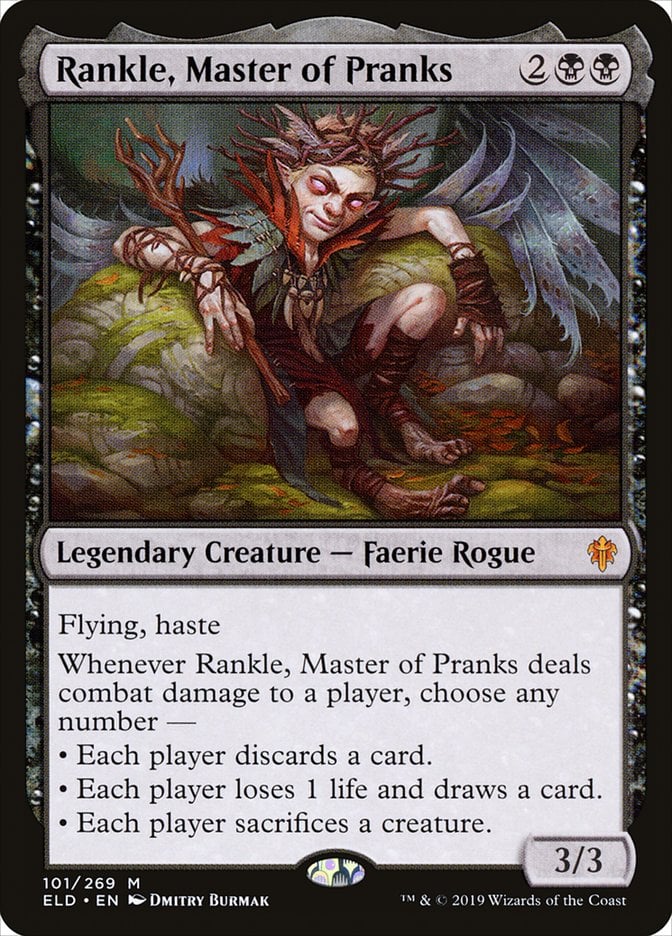
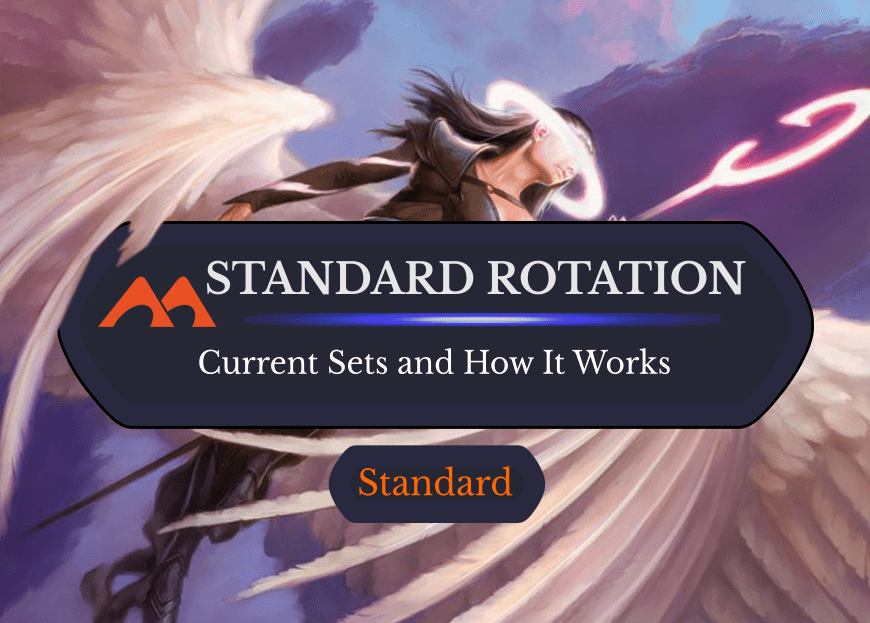
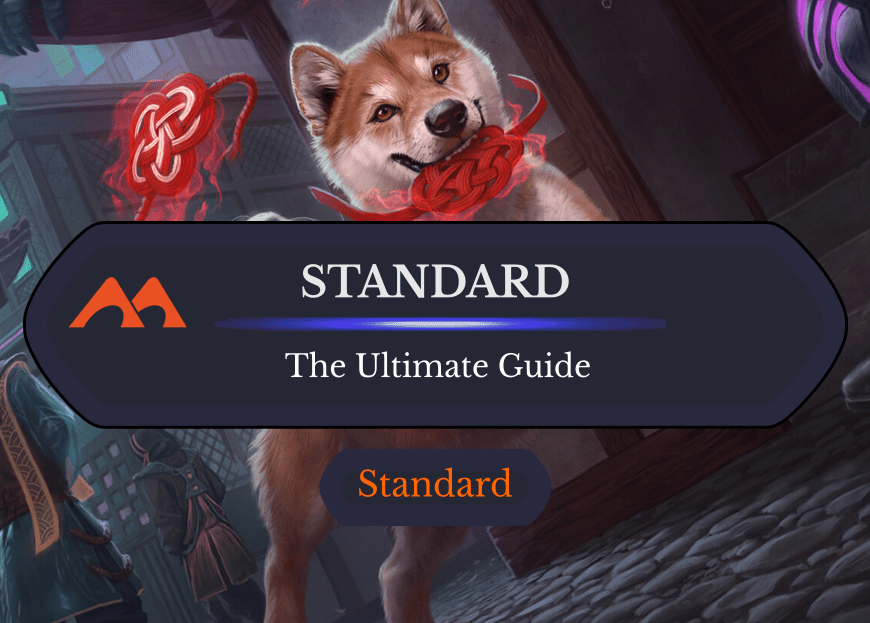
Add Comment